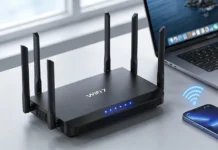Following in Google’s Project Ara footsteps, a British startup has created Android-powered modular smartwatch that can monitor health data and add GPS
A London startup Blocks has adopted Google’s new Android Wear to make a customisable smartwatch that allows users to upgrade and swap out sensors, screens and batteries.
Created by a team at Imperial College, the Blocks modular smartwatch uses a screen that links up to small segments in a band using small metal jacks that act as both the joining anchors and the connections for passing data between the modules.
The main screen section also contains the primary battery, processor and Bluetooth connection to a smartphone for internet access and notifications, relying on linked segments to boost its basic capabilities adding various sensors or modules.
“It’s like a desktop computer,” Hakeem Javaid, one of the developers for Blocks, told the Guardian. “When you needed to upgrade your computer you didn’t just throw it away, you add a new graphics card or more storage.”
“With Blocks you can upgrade your smartwatch and tailor it to suit what you need it to do at that moment, just by swapping out modules.”
Plug and play modules make up the wristband
Blocks intends to create a selection of modules that can be connected in any combination to produce a smartwatch. Some will be fillers to get the spacing right around a wrist, while others will be extra battery packs to keep the watch going longer.
But the majority of the modules will be sensors including GPS, heart rate and activity monitors, temperature sensors, fingerprint scanners, a camera or even a SIM card slot for turning the smartwatch into a mobile phone.
Each module will cost around £20 to £40 and can be plugged in via the connecting holes in the links. The smartwatch then automatically downloading apps and services to support the modules.
Spread features, functions and hardware around the wrist
The screen of the smartphone can also be swapped out to suit the user’s needs, with smaller LED screens, e-ink displays like those used on the Pebble smartwatch or a full touchscreen like most of the smartwatches available today.
“It made perfect sense to use to spread those kinds of features and hardware around the wrist instead of throwing them all into one thick lump under the screen on top of your wrist,” said Omer El Fakir, industrial designer of Blocks. “A heart rate sensor, for instance, is much better suited to the underside of your wrist where you would normally measure a pulse.”
The startup took inspiration from Google’s modular smartphone concept Project Ara, and iterated the idea into a wearable. Now, following the launch of Google’s wearable software, Android Wear, which was first seen on LG and Samsung’s smartwatches, Blocks has taken the leap to join Google’s crowd.
“We’re intending to use Android Wear, now it’s been released,” Javaid explained. “We previously looked at Tizen, and were going to use the open-source elements of Android to build our own software, but Android Wear is ideal.”
“The only issue with using Android Wear is that it prevents us from making the smartwatch compatible with iPhones, but that’s something we’ll have to look at further down the line,” said Javaid who was worried about the expectations that Apple would release its own smartwatch or wearable device in the near future.
Cross-discipline team originally from Imperial College
The project started in November between a group of Imperial College students who wanted to combine a gesture-based system with bio sensors and came up with the idea of a modular smartwatch.
Blocks garnered interest from a range of developers including Barclays, which is interested in creating a block for simulating a contactless credit card, similar to the Bank’s smartphone apps.
Buoyed by the release of Android Wear, the company already has 4,000 people signed up to its waiting list and is aiming to take a crowdfunding round on Kickstarter in the Autumn and to ship devices into people’s hands within eight months.
“We’d love to replicate the success of the Pebble,” said El Fakir. “That was a beautiful product and did very well through Kickstarter.”
Time to shrink things down
The next stage in the project is to miniaturise the hardware components and make them fit into the industrial design of a slim watch – something that people will actually wear as apposed to the large chunky prototype that the team had to share at the Bluetooth SIG display in London on Tuesday.
Once up and running the company will open up the Blocks platform to developers, who can make their own modules for the smartwatch, although whether any third-parties are likely to take that risk with the likely high manufacturing costs is unknown.
“What’s most likely going to happen is that third-parties will be able to send us their designs and we will manufacturer them, as we’ll have put the investment into the manufacturing lines and will be able to do more cost effectively,” admitted Javaid.



















